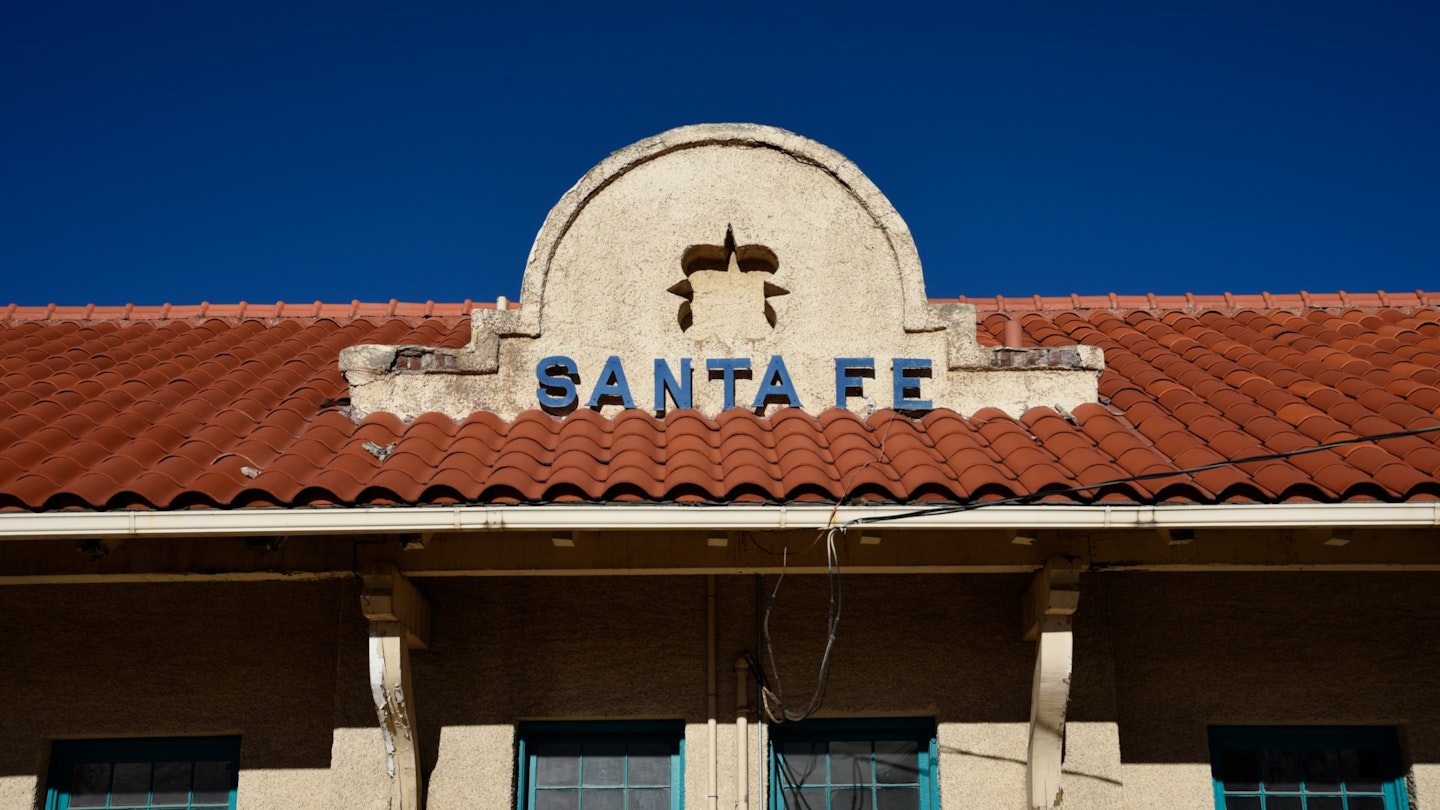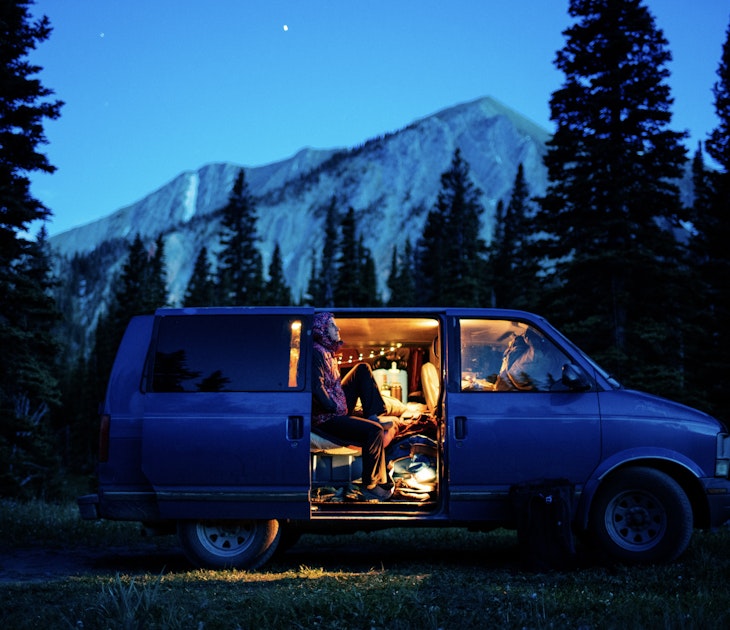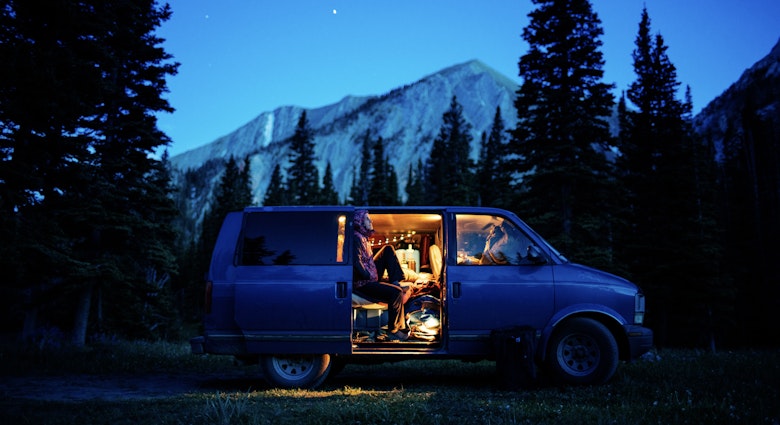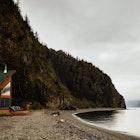There are many reasons to travel to Santa Fe – or as locals like to call it, "the City Different" – but one of the best reasons is the city's proximity to some of the most historic and culturally vibrant places in the United States. This is where the fantasies and realities of the Wild West were honed, where pre-colonial civilizations created some of their most enduring monuments, and where Spanish, Mexican and American influences fuse on every dinner plate.
Then there's the terrain. Northern New Mexico’s high desert is some of the most biodiverse land in the country, and aeons of erosion by wind and water have carved out landscapes that are well worth hopping into the car to explore. Traveling here is a window onto a different New Mexico – following winding roads across the Sangre de Cristo mountains, you’ll discover hidden villages with unique stories to tell.
A day trip from Santa Fe is a safari into the untarnished history and culture of the Southwest. Here is our pick of the best days out from New Mexico's vibrant capital.

Chimayo
Located just off the famous "High Road to Taos," with one foot in Santa Fe County and one foot in Rio Arriba, Chimayo also straddles the intersections of time. This historic pueblo (village) harks back to Spanish times, and its 19th-century church is one of the country's most important Catholic shrines.
If you happen to visit during Holy Week, you'll find yourself sharing the 29 picturesque miles of road from Santa Fe with hundreds of pilgrims and penitentes (practitioners of ritual penance), engaged in the centuries-old practice of walking, crawling, and hauling crosses on their backs to this sacred site. The focal point of devotions is the Santuario de Chimayo, a Spanish colonial-style Catholic church built from adobe in 1813.
The construction of this historic church was petitioned by Don Bernardo Abeya, a member of Los Hermanos Penitentes – a secret society of Catholic penitents that is still in existence today – but the church itself is no secret. It attracts some 300,000 visitors a year as one of the most important Catholic pilgrimage centers in the United States.
In fact, Chimayo's sacred status precedes the arrival of the Spanish. The location was a holy site for the Tewa, and Spanish settlers witnessed healing miracles occur when small amounts of soil from the site was ingested. The church houses a specific room where the floor is open to the earth so visitors can take home the holy dirt or consume it on site.
Chimayo and the Santuario are located on the ancestral homeland of the Tewa, a Pueblo people who inhabited this part of New Mexico for thousands of years before the area was occupied by the Spanish in the 1600s. The Tewa were the first to acknowledge a spiritual connection with the land where the church now sits, and people from the community still refer to this area as "Tsi-Mayo," the Tewa name for the four sacred hills located behind the church.
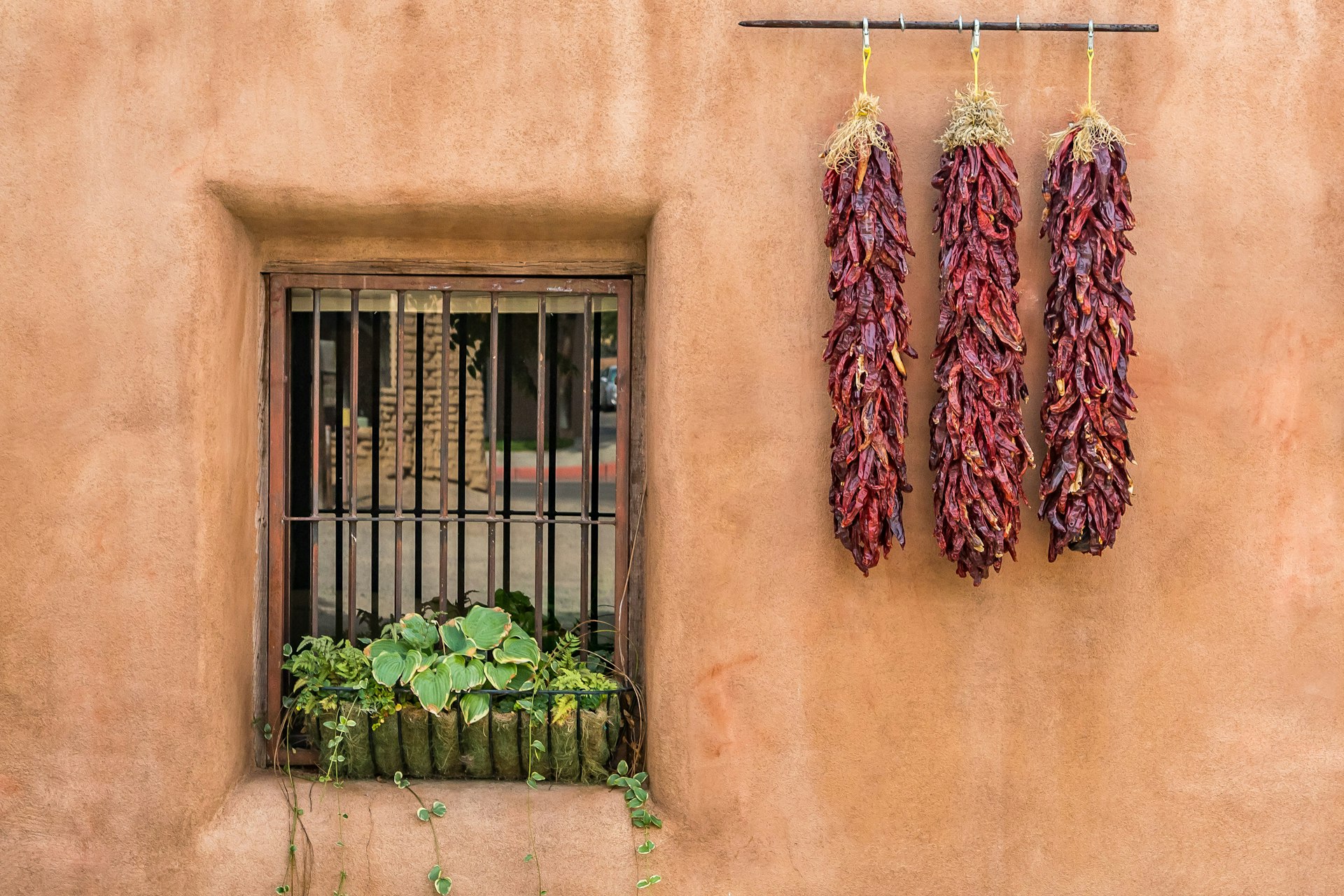
In addition to sacred soil, the earth that runs through the upper Rio Grande Valley produces some of the most excellent red chilies in the state. The longer the chile stays on the plant, the riper and redder it becomes and the more intense its flavor. Visitors will spot dried red peppers in the chile ristras (chile garlands) embellishing doorways and portals throughout Santa Fe County.
Once harvested and dried, pods are soaked and blended into red chile sauce or ground into a powdery spice that local vendors, whose family roots go as deep into the soil of Chimayo as the local cottonwood trees, sell along Chimayo’s main street in stuffed zip-lock bags. The area is also famous for the textiles produced by the Ortega and Trujillo families, whose weaving traditions can be traced to the five thousand churro sheep that arrived with Francisco Vázquez de Coronado and his Conquistadors in 1540.
How to get to Chimayo: It's an easy 29-mile drive from Santa Fe to Chimayo along Route 84/Route 285, turning east onto State Road 76 at Española. Alternatively, you can take the scenic route, branching off Route 84/Route 285 at Pojoaque and picking up State Road 503 – the High Road to Taos Scenic Byway. Allow about 45 minutes for the drive.
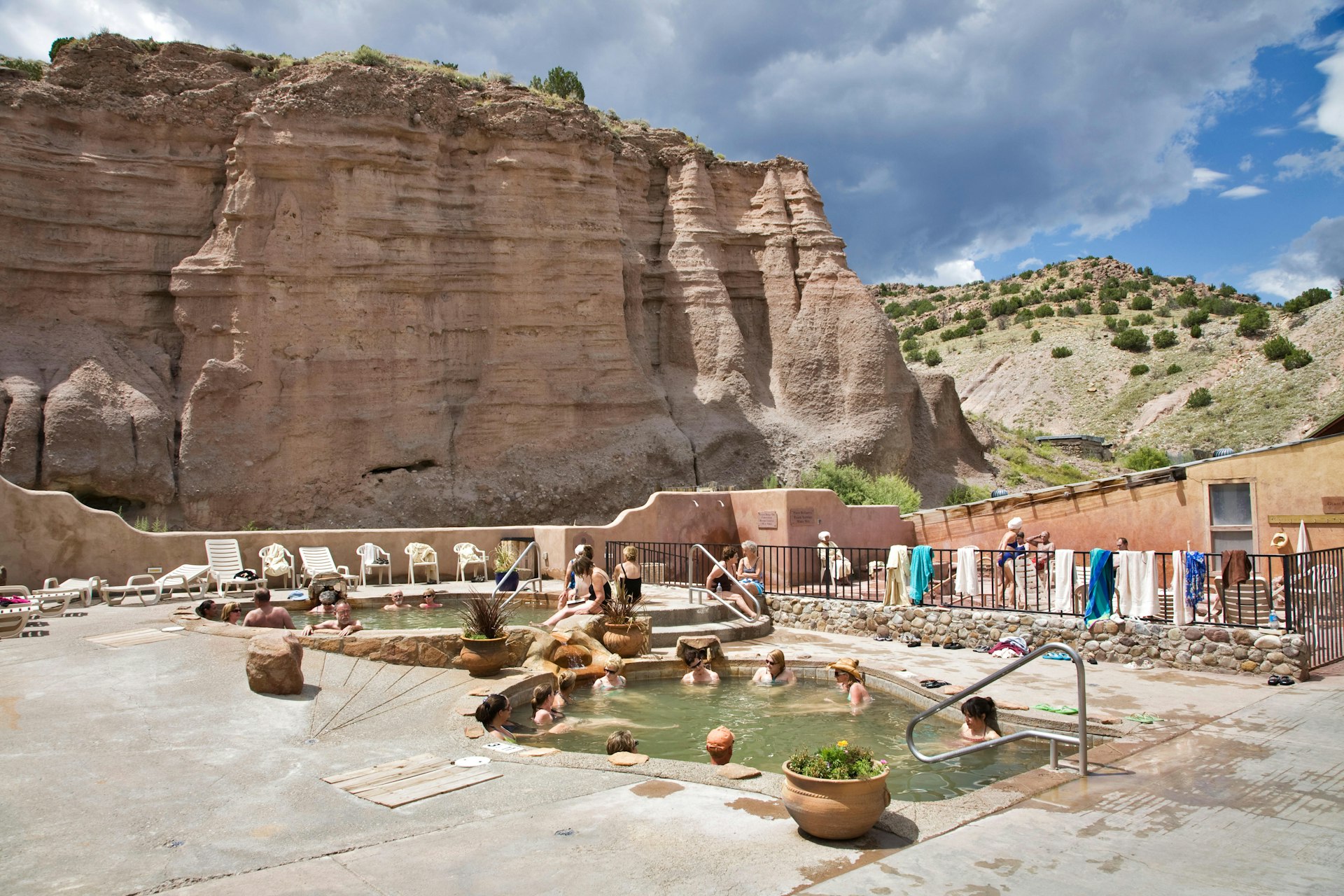
Ojo Caliente
The upper Rio Grande is dotted with hot springs, most famously those at the Ojo Caliente Mineral Springs Resort and Spa. New Mexico's indigenous inhabitants had long recognized the healing properties of the hot, mineral-infused waters, and when the Spanish arrived they quickly developed an appreciation for bathing in the mineral springs, a habit that continued under both Mexican and American rule.
The first proper bathhouse at Ojo Caliente was built in 1868, and a stucco hotel was added in 1916. Today, this historic hub has been expanded into a top-of-the-line spa and resort, though some of the original architecture still stands. The enclosed bathhouse, with its wonderful pebbly floor and rock walls, is the same now as it was when frontiersmen rode the trails.
Folks who balk at the idea of eating the earth at Chimayo can find a less challenging introduction to the healing traditions of New Mexico in the form of an Ojo mud bath, where visitors literally coat their bodies in smooth, chocolatey mud and then lay out in the New Mexico sunshine to bake, a process that is believed to extract toxins from the skin. Afterwards, you can wash off with warm spring water.
How to get to Ojo Caliente: To reach the springs, follow Route 84/Route 285 as far as Española, then stick to Route 285 as it veers northeast (Route 84 heads off to the northwest towards Chama). Allow about an hour and a quarter for the drive.
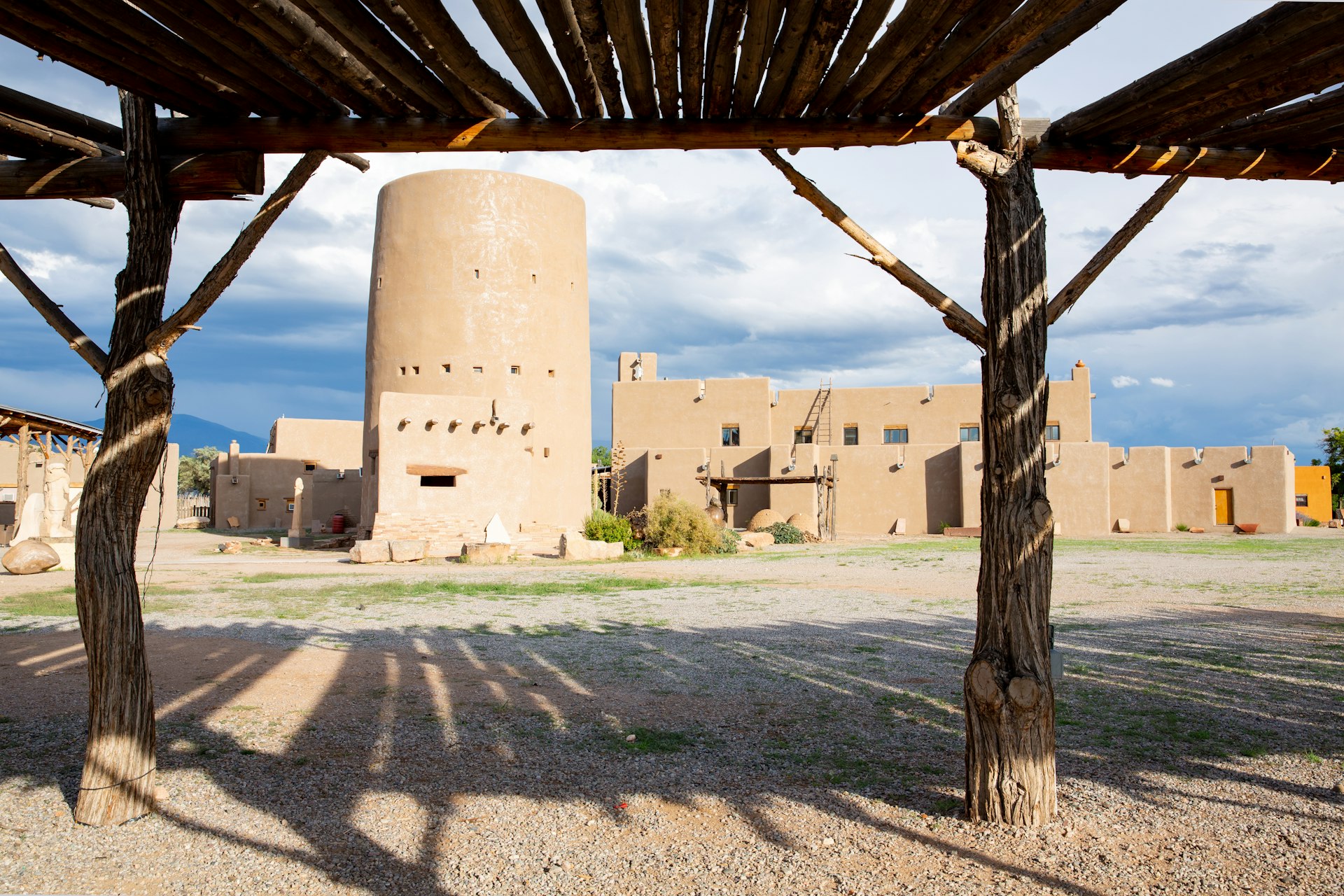
Pojoaque
While the 19 recognized pueblos (traditional indigenous villages) of New Mexico were closed to outsiders in response to the COVID-19 virus, it is still possible to learn more about Tewa life at the Poeh Cultural Center in Pojoaque, a modernised pueblo that bounced back from a smallpox outbreak in the 19th century. A 20-minute drive north of Santa Fe, the Poeh Center is located to the east of the highway, easily identifiable by its iconic adobe architecture. It's striking Tower Gallery sits on the horizon like an ethereal desert sandcastle.
Inside the tower is an art gallery where the work of Tewa artist Roxanne Swentzell and other Native American artists can be viewed and purchased, while other buildings are given over to a museum that serves as a unique hub for Pueblo culture. As well as displays on Pueblo life, the museum plays an active role in the community, promoting cultural preservation through markets, special events and exhibitions involving local Pueblo families.
If you can't get to the 1000-year-old adobe settlements at Taos or Acoma, a visit to the Poeh Cultural Center is a great way for anyone visiting the ancestral Tewa homelands of Santa Fe and Northern New Mexico to gain a deeper respect and understanding for the area and its original inhabitants.
How to get to Pojoaque: The town of Pojoaque is a 20-minute drive north from Santa Fe along Route 84/Route 285. The Poeh Cultural Center is impossible to miss beside the road as you come into town. Heading onward from Pojoaque, you can follow State Road 503–the High Road to Taos Scenic Byway – to reach Taos in about two hours, passing through stunning Sangre de Cristo Mountain landscapes.
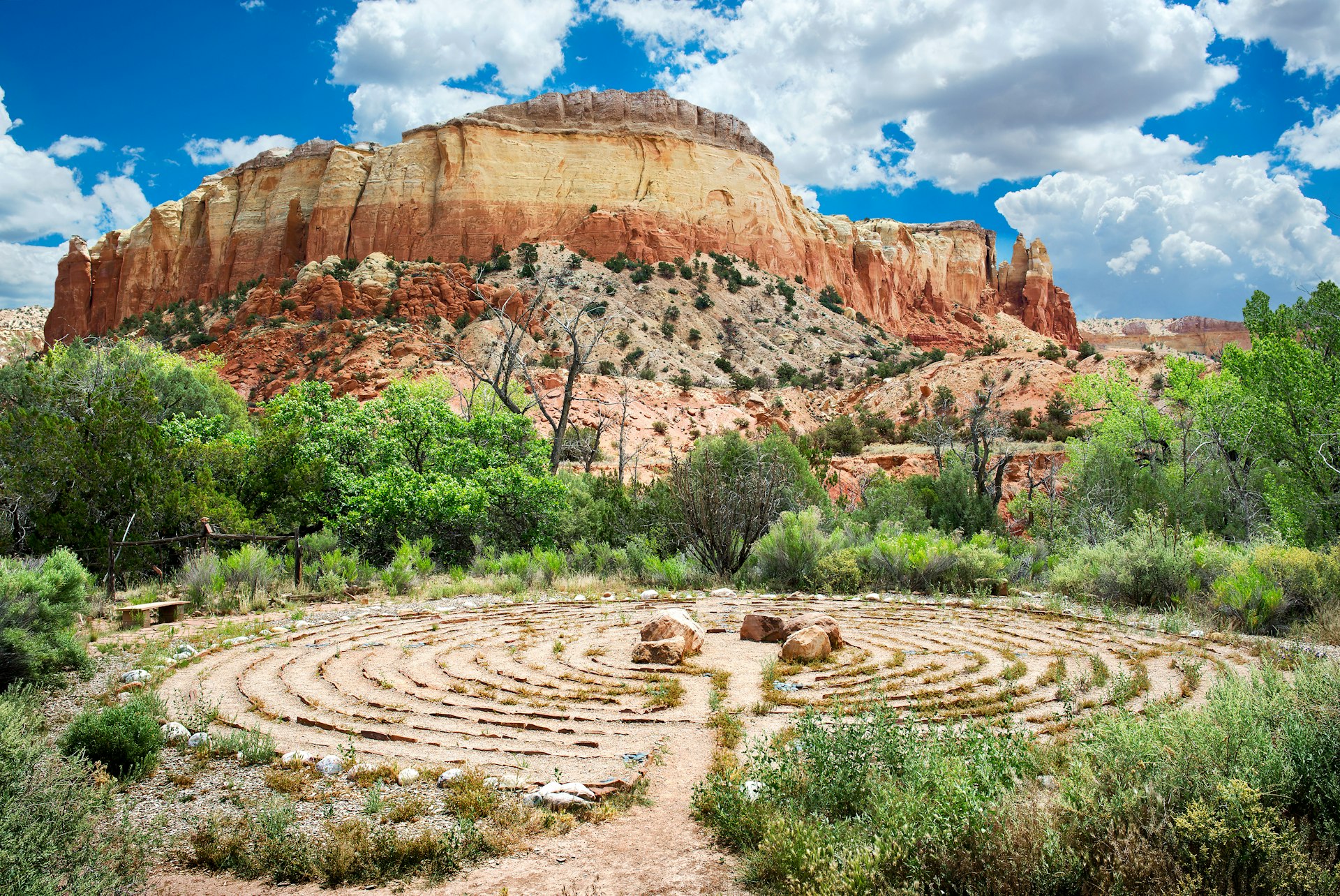
Abiquiu
Santa Feans often wonder why anyone would go to Europe to see art when some of the planet's most remarkable creativity can be found right here in New Mexico. From a robust Native American art community to modern legends like Georgia O’Keefe, Judy Chicago, Bruce Nauman and actor-artist Dennis Hopper, New Mexico has spawned or provided a home for more notable artists than we could ever list here.
Take a drive to Abiquiu and you'll soon grasp what draws artists to these elemental landscapes. Photos can never fully capture the drama of the red, white and black rock formations, and the way the light sculpts them into almost supernatural forms along the horizon at different times of day. It's easy to understand why Georgia O’Keefe chose to make her home at Ghost Ranch, a 20,000-acre property now operated by the Presbyterian Church as an educational and spiritual retreat offering classes, horseback riding and tours.
Just north of Abiquiu is a particularly unusual landscape known as the Plaza Blanca. This otherworldly white limestone rock formation consists of towering white hoodoos (wind eroded pillars) that have led many to credit the area with spiritual properties. The site sits on the grounds of the adobe Dar Al Islam mosque, which welcomes visitors of all faiths without any prior arrangements.
How to get to Abiquiu: Follow Route 84/Route 285 north from Santa Fe to Española, then bear northwest along Route 84 when the two routes split. It's about an hour to the village of Abiquiu; the Dar Al Islam mosque is just north of the main road signposted on a track leading up into the dry hills from the bottom of the valley. Ghost Ranch is a few miles northeast of Abiquiu, signposted off Route 84, beyond the reservoir.
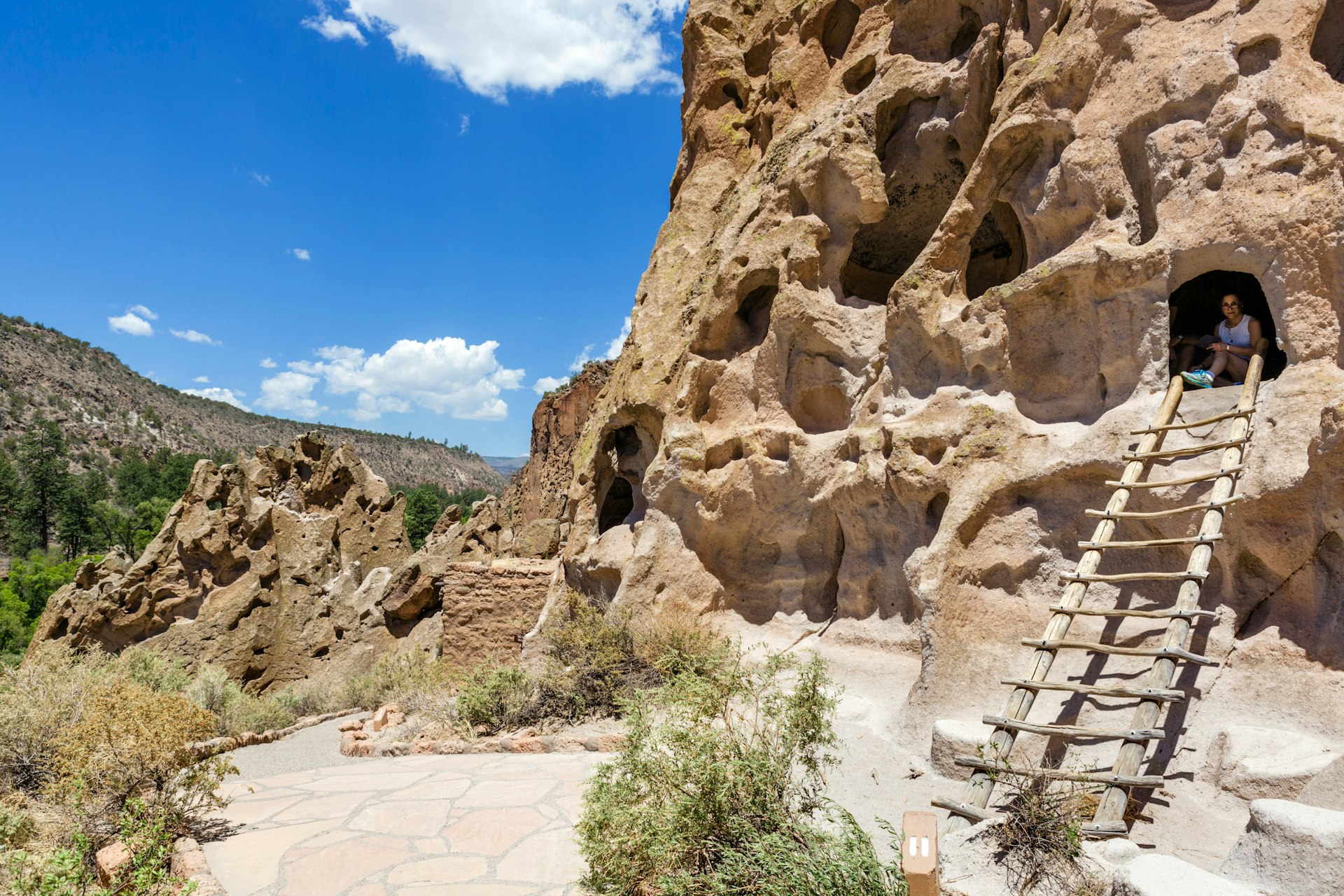
Bandelier National Monument
Head an hour west of Santa Fe and you’ll find yourself on a time-travel journey through human history, going back at least 11,000 years. The Bandelier National Monument site is home to incredible cliff dwellings carved from volcanic tuff, which were hollowed out by the ancient ancestors of the Keres and Tewa communities that still inhabit pueblos to the north and south of the cliff dwellings. The largest village in Bandelier’s main canyon retains its Keres name of Tyuonyi, while the main ancestral Tewa village is called Tsankawi Owinge.
This national park also has more recent historical ties. During the New Deal of the 1930s, the federal government created the Civilian Conservation Corps, rescuing many young men from unemployment by putting them to work renovating the site. Several pieces of southwestern art deco architecture are still visible, along with priceless murals created by artist Pablita Velarde from the Santa Clara Pueblo as part of the Public Works of Art Project, which employed many New Mexico artists during the Great Depression.
How to get to Bandelier National Monument: The national monument covers 33,000 acres, so there's a fair bit of ground to cover. Self-guided hiking trails criss-cross the site, and ranger led-walks run from the Frijoles Canyon visitor center. You can drive right up to Frijoles Canyon in winter, but from mid-May to mid-October, you'll need to take a mandatory shuttle bus from the visitor center at nearby White Rock. Driving from Santa Fe, go north on Route 84/Route 285 to Pojoaque, then bear west along State Road 502 and State Road 4 to reach White Rock, then Bandelier.
You may also like:
Where to see a UFO
The best day trips from Albuquerque
We've visited 48 US states in a camper van – these are the 10 best

